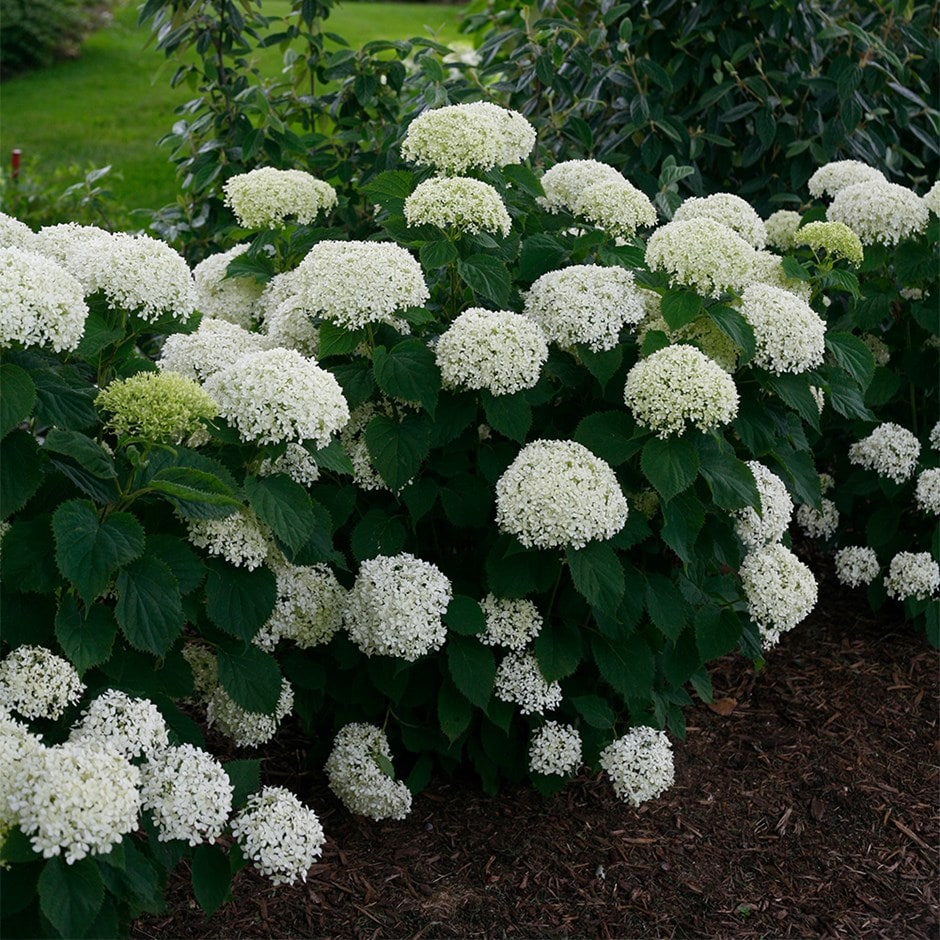Hydrangea arborescens Belleragazza Limetta ('Ncha8') (PBR)
sevenbark
- 2 litre pot
- £29.99
- available to order from spring
Delivery options
- Standard £5.99
- Position: full sun or partial shade
- Soil: moderately fertile, moist but well-drained soil
- Rate of growth: average
- Flowering period: July to September
- Hardiness: fully hardy
This dwarf hydrangea offers a compact habit and sturdy stems that support its abundant lime-green mophead flowers with ease.
Blooming from early summer into autumn, its buds open in sharp green tones, gradually softening to ivory-lime as the season progresses. Ideal for small gardens, containers, or the front of borders, it requires minimal maintenance once established and rewards with months of vibrant colour that transitions but persists well into autumn.
Regular deadheading encourages repeat flowering, and the blooms are excellent for cutting or drying. Hydrangea arborescens Belleragazza Limetta combines beauty and easy to care for practicality, making it a standout choice for gardeners with limited space.
Blooming from early summer into autumn, its buds open in sharp green tones, gradually softening to ivory-lime as the season progresses. Ideal for small gardens, containers, or the front of borders, it requires minimal maintenance once established and rewards with months of vibrant colour that transitions but persists well into autumn.
Regular deadheading encourages repeat flowering, and the blooms are excellent for cutting or drying. Hydrangea arborescens Belleragazza Limetta combines beauty and easy to care for practicality, making it a standout choice for gardeners with limited space.
Choose a spot with partial shade to full sun, though at hotter, sunnier times of the year, partial shade is preferable to protect the blooms and avoid the plant wilting after planting. The soil should be well-drained, rich, and consistently moist, but not waterlogged.
Dig a hole twice the width of the root ball and just as deep, then mix in plenty of organic matter such as compost or well-rotted manure. Place the plant in the hole, backfill with the enriched soil, and water thoroughly. Mulch around the base to retain moisture and keep the roots cool, but keep the mulch away from the stem to prevent rot.
Regular watering is important, especially during dry spells, to ensure the plant establishes well and produces abundant blooms - hydrangeas do not like to dry out. Remove faded flowerheads in spring after the danger of frosts, cutting back the flowered stems to a strong pair of buds. Take out misplaced or diseased shoots.
Once established, remove a quarter to a third of the shoots to the base of the plant.
Dig a hole twice the width of the root ball and just as deep, then mix in plenty of organic matter such as compost or well-rotted manure. Place the plant in the hole, backfill with the enriched soil, and water thoroughly. Mulch around the base to retain moisture and keep the roots cool, but keep the mulch away from the stem to prevent rot.
Regular watering is important, especially during dry spells, to ensure the plant establishes well and produces abundant blooms - hydrangeas do not like to dry out. Remove faded flowerheads in spring after the danger of frosts, cutting back the flowered stems to a strong pair of buds. Take out misplaced or diseased shoots.
Once established, remove a quarter to a third of the shoots to the base of the plant.
- Humans: Skin allergen; Pets: Harmful if eaten




